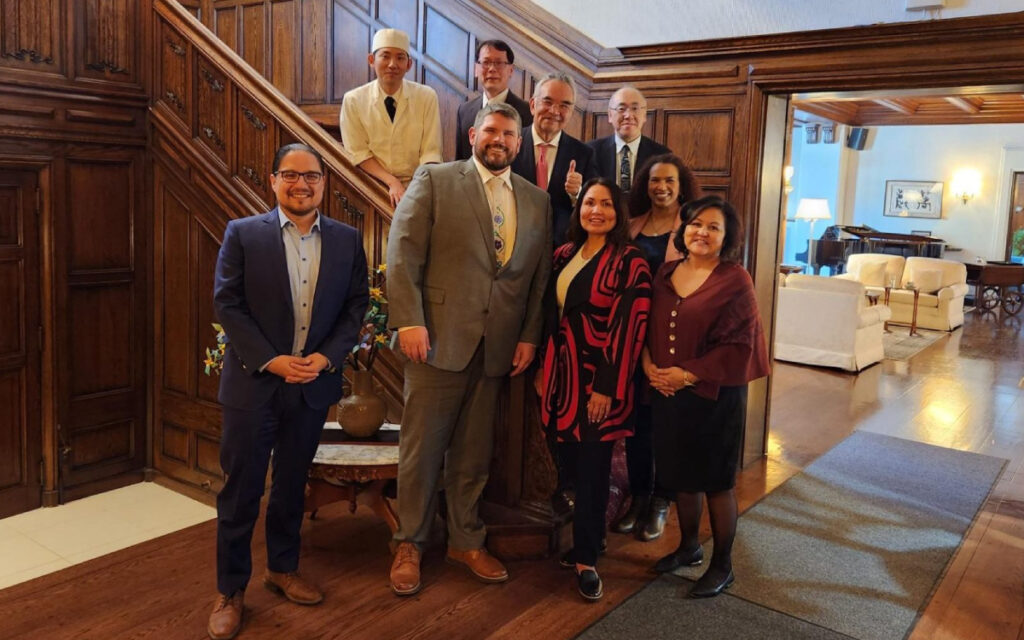
“It’s like we’re finally at the table and we’re having to fight to keep our seat at the table.” Pictured: Indigenous leaders meeting with Japan’s ambassador to Canada Kanji Yamanouchi. Photo Credit: Energy for a Secure Future.
A proposed cap on oil and gas emissions will threaten opportunities for Indigenous communities to bring cleaner alternatives to coal to international markets, Indigenous leaders warned during a recent webinar.
Karen Ogen, CEO of the First Nations LNG Alliance, fears Indigenous-led projects like Cedar LNG and Ksi Lisims LNG are threatened by the cap, which is essentially a cap on production.
“If we’re going to help China and India get off of coal and help reduce their greenhouse gas emissions, it makes common sense for us to be selling our LNG to Asia and to other countries. To put a cap on, it would just stop us from doing that,” Ogen said.
“It’s like we’re finally at the table and we’re having to fight to keep our seat at the table.”
Indigenous communities across Canada have increasingly become involved in oil and gas projects to secure economic prosperity and reduce on-reserve poverty.
Since 2022, more than 75 First Nations and Metis communities have entered ownership agreements across western Canada. Among those are key projects like the Coastal GasLink pipeline and the joint investment of 23 communities to obtain a 12 per cent ownership stake in several oil sands pipelines.
The planned federal emissions cap will stall progress toward economic reconciliation, Ogen said.
“Our leaders did not accept this and fought hard to have rights and titles recognized,” she said.
“These rights were won through persistence and determination. It’s been a long journey, but we are finally at the table with more control over our destiny.”
Chris Sankey, CEO of Blackfish Enterprises and a former elected councillor for the Lax Kw’alaams Band in B.C., said the proposed emissions cap could stifle Indigenous communities pushing for poverty reduction.
“We’re working hard to try to get our people out of poverty. All [the emissions cap is] doing is pushing them further into debt and further into poverty,” he said.
“When oil and gas is doing well, our people do well.”
Together, the Trans Mountain Pipeline Expansion, LNG Canada project and Coastal GasLink pipeline have spent more than $10 billion in contracts with Indigenous and local businesses.
Indigenous employment in the oil and gas industry has also increased by more than 20 per cent since 2014.
For Stephen Buffalo, CEO of the Indian Resource Council, an emissions cap feels like a step in the wrong direction after years of action to become true economic partners is finally making headway.
“Being a participant in the natural resource sector and making true partnerships, has been beneficial for First Nations,” he said.
“So, when you see a government trying to attack this industry in that regard, it is very disheartening.”
This article was first published by the Canadian Energy Centre.




















